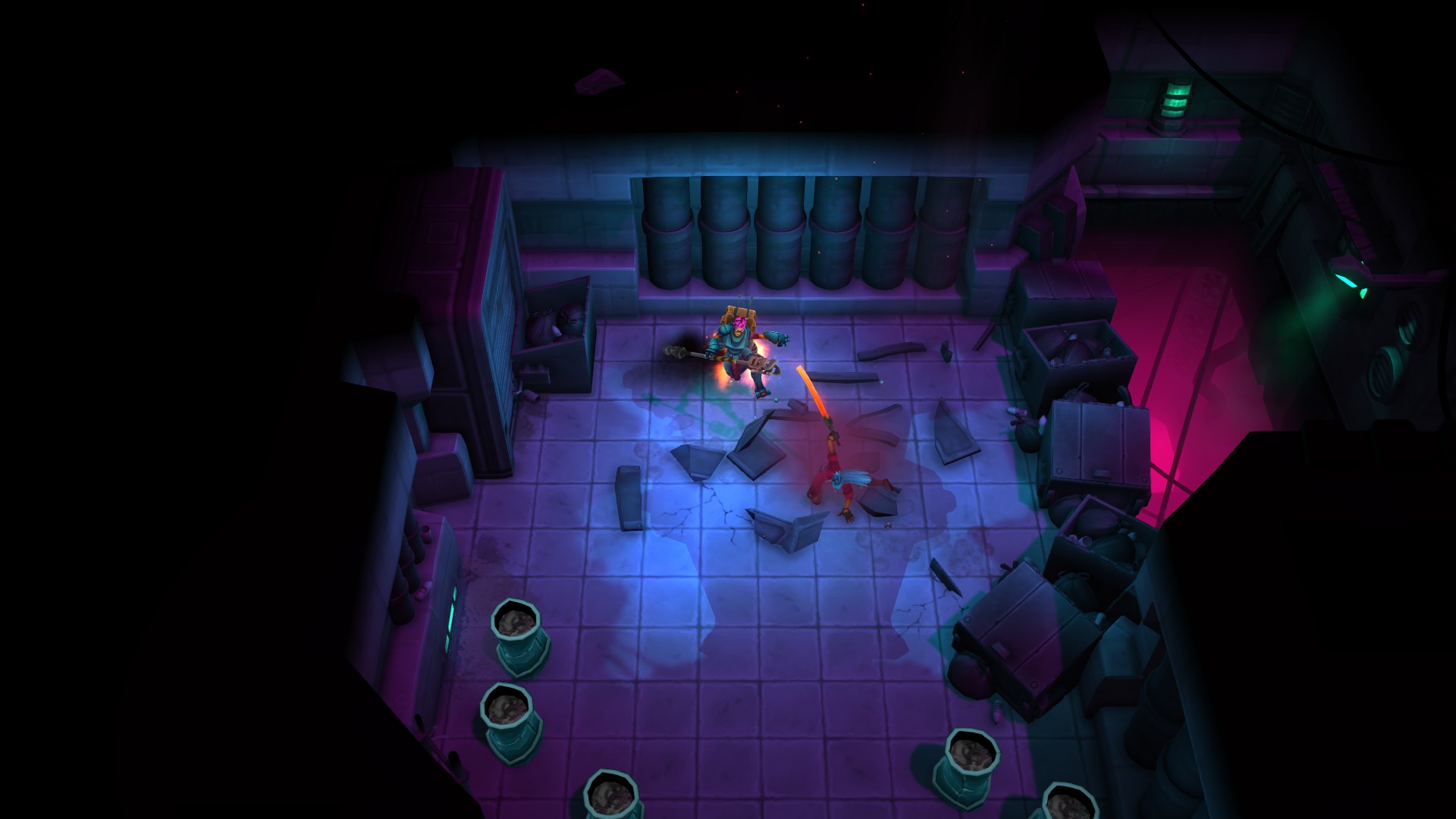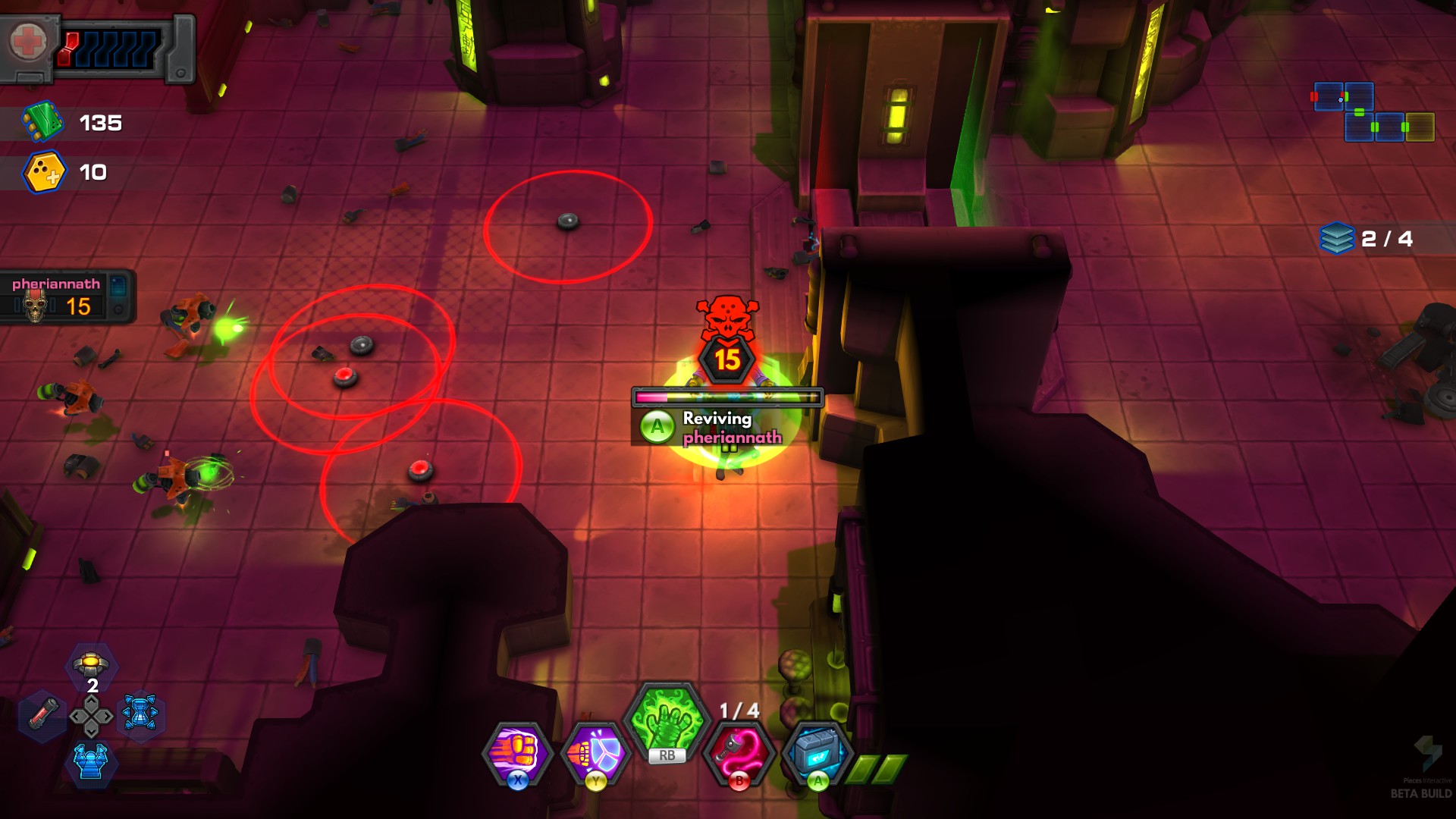
Every time you enter a new room, there’s a brief “threat assessment” moment where scope out the enemies and prioritize who to kill first. While all of the hunters can only attack at close-range, the same does not hold true for all foes. Some try to get close and swing at you, others dash away to shoot at you from a distance, and some will even try to shoot you with a grappling hook and pull you close. Determining which enemy to engage first depends almost entirely on what friends he has with him, but regardless of what you do, you won’t be spending the whole fight mashing the attack button.
There’s an ebb and flow to Kill to Collect’s combat that reminds me of Dark Souls. Most attacks in the game have a little wind up to them, so if an enemy is about to attack you, you have a brief second to dodge away before you’re hit. If you’re attacking an enemy, you’re committed to that attack until it hits. It even takes your hunter a little time to turn around; this is not like a twin-stick shooter where you point the stick in a direction and you’re instantly facing that way. All of this accumulates into Kill to Collect’s combat being more strategic and less “twitchy” than other titles. You’ll have to choose when to get in and attack a foe, and when to dodge away and get some distance. Dying almost always feels like the result of something you did as opposed to the game getting in a cheap shot. It has a surprising amount of depth that will continue to provide players with a challenge no matter how long they’ve played.
Each of the four playable bounty hunters feel unique while at the same time feeling equal; no one hunter feels better or stronger than the other. Ivan Ironfist, for example, does the least amount of damage with his primary attack, but he attacks faster than all the other hunters and is able to warp behind enemies. His special ability also sets foes up to take more damage the next time they are damaged. Ivan is best used as a kind of “hit-and-run” hunter; warping in to get a couple hits in before warping away again.

Contrast that kind of play style to Shocking Shelley, who has a slower attack speed, does more damage, and uses her electric staff and turrets to stun enemies so she can stay in the fray longer. Neither of these hunters is inherently “better” than the other. They both have their strengths and weaknesses, which is part of what makes the co-op experience work so well. Pairing up these two hunters allows players to try out new tactics. For instance, Shelley could stun a group of enemies so Ivan can warp in and hit them with his special, which would allow Shelley to do more damage to them when she attacks. These kinds of strategies will be needed, too, the number of enemies you face increases with the number of players, ensuring the game remains challenging for all.
Should that challenge prove to be too much for a player, then he or she has a limited amount of time in which they can be revived by a teammate. As the enemies won’t stop their assault to let that happen, the revive timer may expire, in which case the player will have to wait until the rest of the team reaches the end of the floor or completes a challenge room in order to be revived.
From a broad view, Kill to Collect may sound like any number of roguelike action titles. Its visual style and soundtrack are noteworthy, but they’re rarely utilized for anything more than set dressing. Playing the game, though, reveals something more. While it may not be the cyberpunk adventure I had initially envisioned or hoped for, Kill to Collect is an engaging, skill-based action title with a satisfying co-op experience.
Verdict
Co-Op Score
Overall
The Co-Op Experience: Players choose from a ragtag team of four Hunters, each with their own unique abilities and fighting styles, to defeat enemies and collect bounties
Co-Optimus game reviews focus on the cooperative experience of a game, our final score graphic represents this experience along with an average score for the game overall. For an explanation of our scores please check our Review Score Explanation Guide.